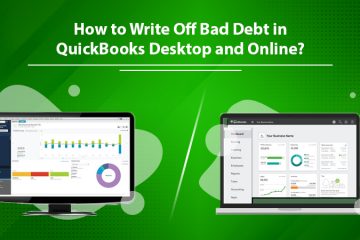Setup QuickBooks Desktop Loan Manager and Loan Tracking

 QuickBooks being the most useful software is used for managing loans, repayments, track payments, etc. which helps a user to create monthly instalments and additional payments which are required. Setup QuickBooks desktop loan manager and loan tracking is one area where long-term liability and current liability accounts information is given. This software tackles all the problems by calculating the appropriate amount as principal, interest, and amount.
QuickBooks being the most useful software is used for managing loans, repayments, track payments, etc. which helps a user to create monthly instalments and additional payments which are required. Setup QuickBooks desktop loan manager and loan tracking is one area where long-term liability and current liability accounts information is given. This software tackles all the problems by calculating the appropriate amount as principal, interest, and amount.
Quick steps to setup QuickBooks desktop loan manager
- Click on the Banking option from the QBL loan manager.
- Click on Add a loan option by filling in all the necessary details.
- Choose a strong account name that is long-lasting and is used commonly.
- From the drop-down list choose payee.
- Details like date of origin should be filled in.
- The list of terms will appear in which you have to select one from weeks, months, and years.
- After clicking Next, choose a payment method by filling interest rate.
- Choosing the option of compound rate you have to proceed further with a bank account from the payment account list.
- Choose the option of interest expense account and click on finish.
How you can setup QuickBooks desktop loan manager?
Step 1: Business Loan Setup in QuickBooks
- Choose a chart of accounts by clicking on the gear icon from the company list.
- Change the account type based on loan type whether it is a long-term liability or current liability.
- After proceeding with the above process change the detail type to loan payable.
- Save and close after putting the name of the account.
Step 2: Add Opening Balance
- Choose the bank deposit option after clicking on the plus icon.
- You will see the drop-down list in which you have to select the account in which you want to deposit the loan funds.
- You have you enter the deposit date.
- Enter the loan payable account in the account column that is created with the amount.
- You can now save and close.
Step 3: Loan Payment Record
- Select the option of a check from the vendors list by clicking on the plus icon.
- Enter the check number if you are sending an original check.
- Enter debit in the check box if you are about to withdraw an amount.
- You can enter the details given below:
- Expense account for interest and amount
- Liability account for loan and payment amount.
- Additional fees with proper accounts.
- You can save and close.
Steps to Set up Loan Tracking in QuickBooks Loan Manager
There are plenty of options for doing this and some of them are given below:
- Create a vendor for a bank/ financial institution if no vendor has given you a loan.
- You can also create an escrow account if needed.
- Enter the loan amount that will become your opening balance or transaction. For this process, you need to enter the loan origination date.
- In the case where you have already done the payment, you need to update the journal entries for a better record.
- To store payment and fees you can create an account that is similar to the expense account.
Know about Escrow Account and Escrow Amount:
With the help of an escrow account, one can manage monthly loan payments easily. When you go through the loan formality procedure the third-party puts the loan amount in the bank which is known as an escrow amount. This can be easily used for paying taxes. The escrow account is somewhat similar to the QuickBooks asset account.
Process of setting up escrow amount:
- Click on COA from the menu list.
- Select the account
- Choose the option ‘other account type’ and select ‘other current asset’.
- Fill in the name of the account in the account name
- There is an option of giving a brief description which is optional.
- You can now save and close.
Steps to Track Loans and Repayments through QuickBooks Loan Manager
- Choose the option of ‘add loan’ in the banking menu and click on next.
- You need to add the following account details by clicking on the option ‘Next’.
- Use the previously loan account name and put the account name.
- Lender’s name
- Date of loan origination
- The original amount of the loan
- Total time to repay the loan.
- Press on the next by putting all the details of the loan
- Click on ‘due date of next’.
- Amount to be paid in a specific period.
- If you have previously made payments then do the next payment number.
- Details of an escrow account
- Click on the option ‘alert me 10 days before the payment due date’, this is optional.
- Click on ‘finish’ after entering the information of loan interest.
- Enter the interest rate of the loan.
- Compounding period.
- Bank details from which you will repay the loan.
- Interest expense A/C through which the interest will be tracked.
- Enter the charges/expense/fee.
- Click on ‘edit loan details’ if you wish to edit something.
Also Read: How to Make a Journal Entry in QuickBooks Online?
Conclusion
This above-given process will solve your problems related to setup a QuickBooks desktop loan manager. If you are still unable to setup loan manager then get QuickBooks Support from experts to setup it easily. Technical experts are available round the clock to help customers.


